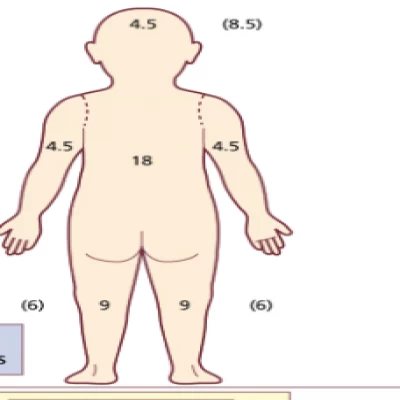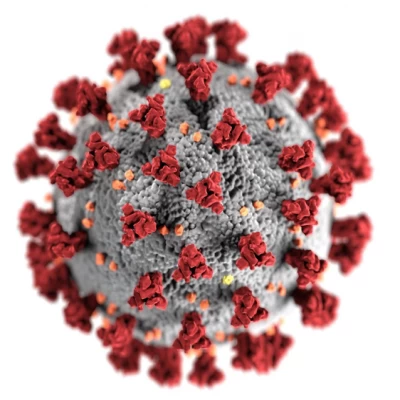مجلات علمية

The Influenza 2017 (H3N2) outbreak was a high severity season due to the high mortality rate. According to the CDC , 45 million illnesses and 61,000 deaths.
What Is the Flu?
Flu or influenza is a respiratory tract infection caused by viruses, it spreads from person to person by coughing or sneezing, there are three types of influenza viruses A, B, C, and D.
Human influenza A and B cause seasonal breakouts of disease.
In 2017 it was a type A virus called H3N2, it's more severe than A H1N1 or type B especially in older adult and younger children
Symptoms of influenza 2017:
1. Fever
2. Cough
3. Runny nose
4. Congested nose
5. Vomiting
6. Diarrhea
7. Fatigue
8. Headache
9. Sore throat
If you have flu symptoms in most cases it's recovery within a week at home, but if you have one of the following symptoms you need to see a physician
1. Having trouble breathing
2. Severe vomiting
3. Severe abdominal or chest pain
4. Feeling of confusion
Take care if you are one of the high risks following groups you have to see a doctor
1. adult ages 60 and more also younger children
2. Pregnant women
3. Patients with chronic diseases such as heart diseases, diabetes, and asthma
4. Patients with immunity diseases like HIV
5. Medical conditions such as cancer
Influenza treatment:
Usually, in a mild infection, it takes one week to recover with some natural remedies (hot drinks, home reset and decrease body temp.)
In severe infections, the CDC recommends antiviral drugs (such as baloxavir, marboxil, oseltamivir , peramivir, or zanamivir) and paracetamol to decrease body temp and antibiotics to prevent secondary bacterial infection.
The drugs work best when you get them within 24 hours of your first symptoms.
How many people have flu-like symptoms in the influenza 2017 season?
Center for diseases control and prevention (CDC) estimated that influenza was associated with 45 million illnesses around the world
How many people died of influenza in 2017?
Every year 25000-50000 people died from influenza, in 2017-2018 outbreaks the number increased to 61000 deaths.
186 pediatric deaths had been reported to CDC during the 2017-2018 season which is a large number compared with another flu season like the highest percentage since the 2009 flu pandemic
When did the influenza 2017 season peak?
In the 2017-2018 flu season influenza-like-illness increased during November 2017 and activity increased to the high period in January and February.
The peak showed a 7.5% increase from the 2009 season.
The 2017 season was the longest flu season in recent years. It is above the national baseline for 19 weeks.
How many children died from Influenza during the 2017-2018 season?
CDC reported that the highest number of pediatric deaths from flu-like illness was in the influenza 2017 season with 186 pediatric deaths (37 pediatric deaths in the 2011 flu season and 170 pediatric deaths in the 2012 session).
How many people were hospitalized from the flu during the 2017 season?
From October 2017_ April 2018
CDC estimates that influenza was associated with 21 million medical visits, and 810,000 hospitalizations, most of them older people 65 years or more (60%). the overall hospitalized rate during the 2017 season was the highest ever recorded flu season and the high severity of H3N2.
How effective was the influenza 2017 vaccine?
The vaccine effectiveness against influenza type A and B is 40%, which means it protects 40% of the high-risk people from the severe symptoms of influenza and decreases hospitalizations.
the Vaccine is effective 25% against type A(H3N2), 65% against influenza type A (H1N1)
and 49% effective against type B influenza.
Flu vaccines prevent 5.6 million illnesses, 7 million medical visits, and reduce children's deaths.
How many flu vaccines were produced and distributed during the 2017-2018 season in the United States?
Most of the influenza viruses collected from the U.S during 2017 flu season are similar to the cell-grown viruses representing the 2017 northern hemisphere flu vaccine viruses.
In February 2018 the private manufacturers supplied the United states market with approximately 155.3 million doses of influenza vaccine; it was expected 166 million doses of the vaccine.
Antiviral resistant viruses were detected during the 2017 flu season:
In some cases, the virus changes and maybe becomes totally or partially resistant to the antiviral drugs, which means antivirals are less effective or not effective in treating the flu and in decreasing the number of illnesses.
Is influenza 2017 the same as swine flu?
Swine flu is influenza type A (H1N1) virus is a combination of pigs virus , birds virus and humans virus that causes disease in humans , and influenza 2017 is type A (H2N3).
Influenza 2017 is more severe and has a higher mortality and morbidity rate than swine flu
What's the difference between covid 19 and flu season 2017-2018?
Covide 19 and flu 2017 are viral infections and the same symptoms in most cases,
But the virus type is different covide19 caused by SARS-CoV-2
and flu 2017 caused by type A influenza virus H3N2, and now a vaccine is available for both of them.
How can you protect yourself from influenza infection?
1- Avoid direct contact with the people who are sick.
2- Put the mask on your mouth and your nose, keep your mouth covered, especially in crowded places.
3- If you are high risk (older or have a chronic disease or immune disease or cancer patients) stay home.
4- Go to the doctor if you are feeling sick and have influenza symptoms.
5- keep your hands clean and wash your hands to protect you from germs.
6- Dress appropriately for the cold in the winter.
7- Healthy lifestyle and healthy food improve your health and your immunity and protect you from infection.





